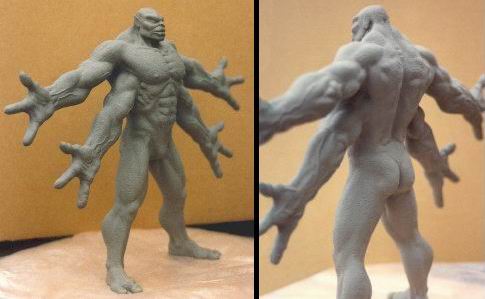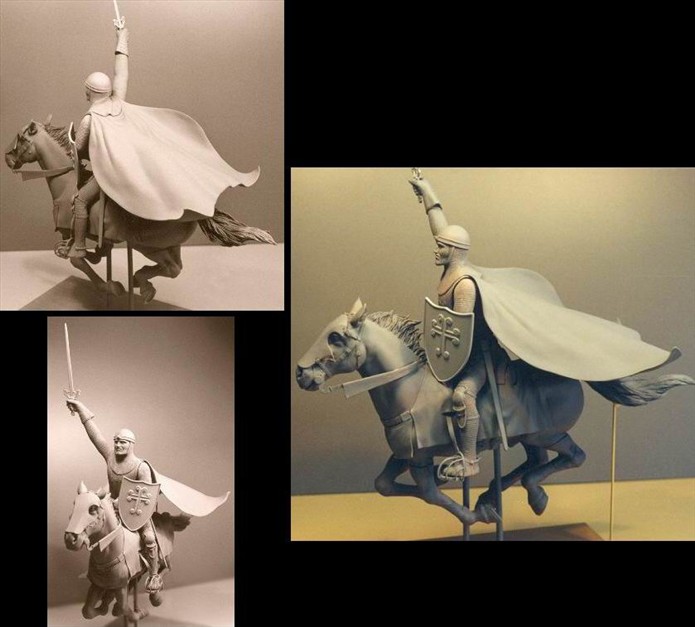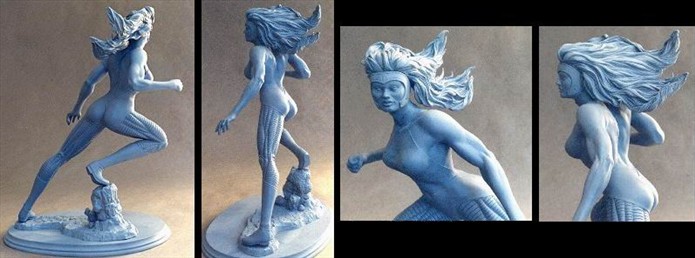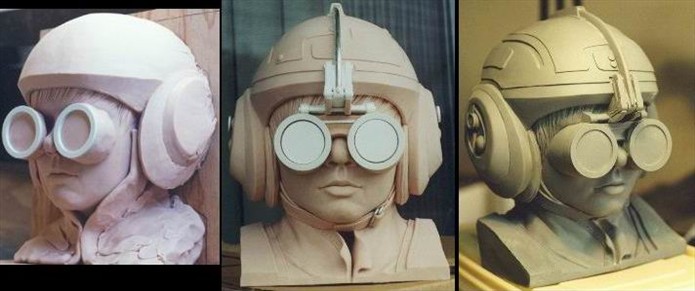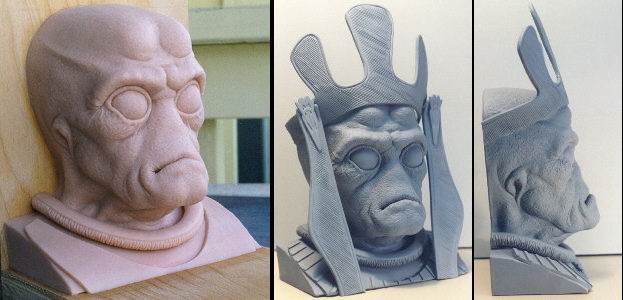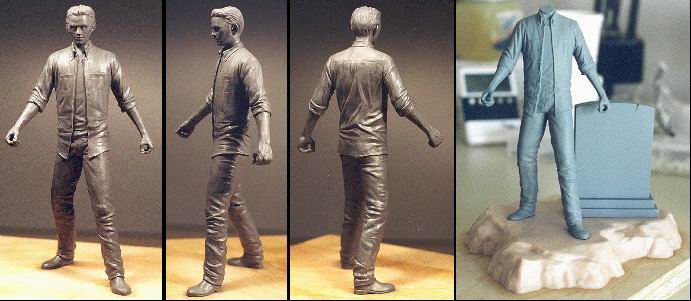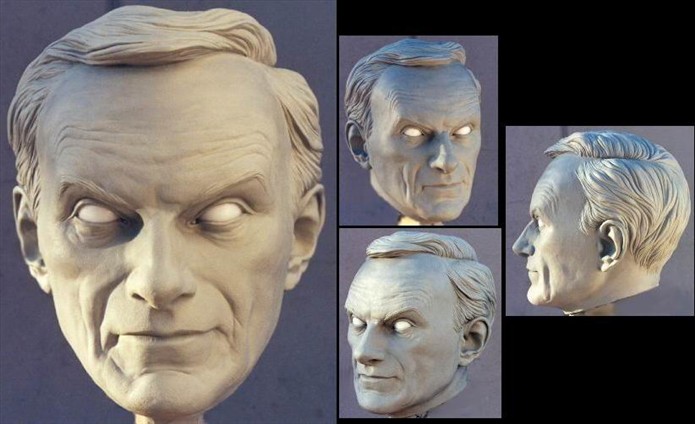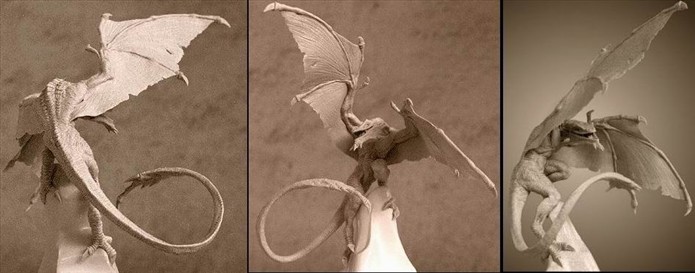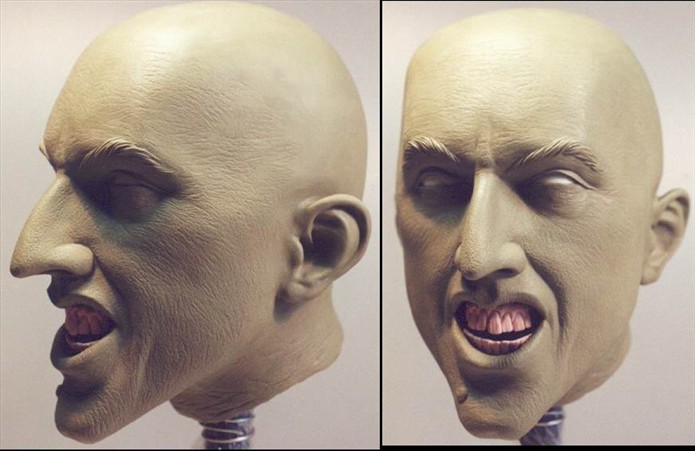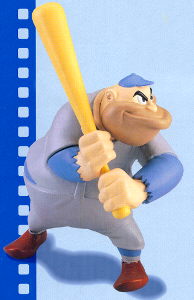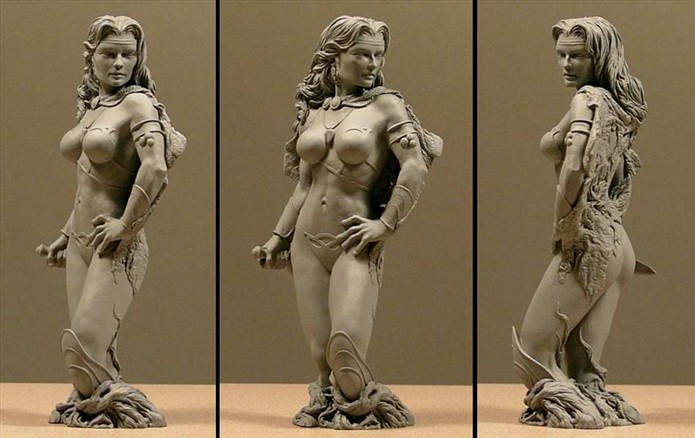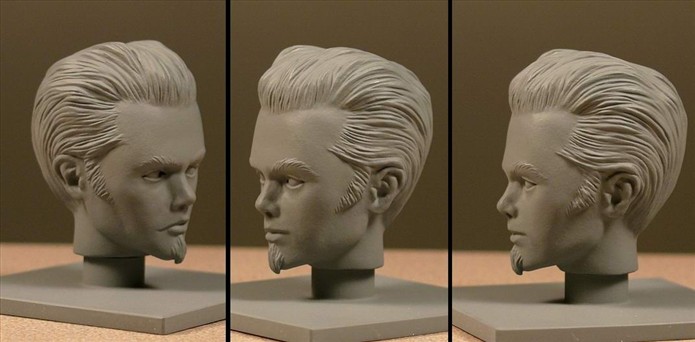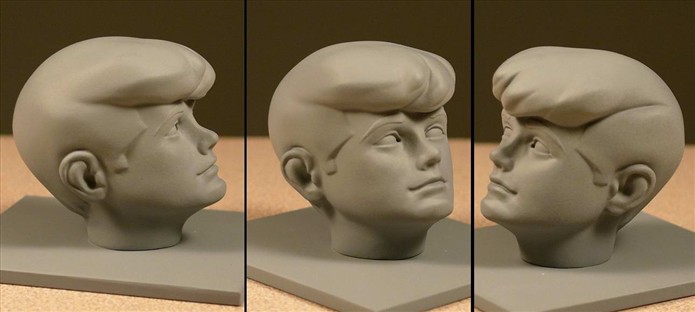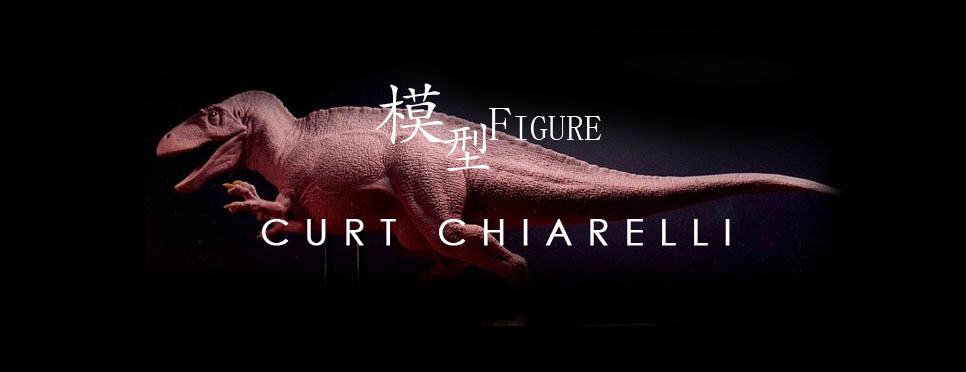
Name: Curt Chiarelli
Birth Date: March 18, 1966
Studio Name: Chiarelli Studios
Location: San Francisco Bay Area. USA.
Experience: Nearly 20 years.
Material Preferences: I enjoy a comfortable facility in wax, epoxy, polymer PVC, oil and water-based plasticene modeling compounds, but, specifically, the media I enjoy working in the most are Sculpey Premo and Chavant brand plasticene.
Sculpture's Size: I'm comfortable creating in any scale from 54mm miniature on up to and beyond life-size figures
seeing the artwork that the Brothers Hildebrandt graced the 1976, 1977 and 1978 J.R.R.Tolkein Calendars with. As I reached my early teens that aspiration was, in turn, elaborated, expanded and supplanted by a burning desire to become a stop-motion animator, matte artist and special effectsman/auteur in the mold of Willis O' Brien, Ray Harryhausen and Jim Danforth. In preparation for entering that arcane craft, I began to teach myself a wide variety of skills that provided the foundation of the field: drafting, technical illustration, machine tool technology, mold-making, casting, sculpture, cinematography, storyboarding, art direction, scale set design and prop fabrication. Other artists who have played a critical role in inspiring my early efforts were Richard Corben, Syd Mead, Ron Cobb, William Cameron Menzies, Zdenek Burian, John Gurche, Stanislaw Szukalski and Tony McVey.
Companies: Microsoft Corporation, Walt Disney Productions, Lucasfilm Licensing, HBO, Universal Studios, MTV, Warner Bros. Toys, Dark Horse Comics, Hasbro Toys, Moore Action Collectibles, McFarlane Toys, Conte Collectibles, McDonald's Corporation, Gemmy Corporation, The Franklin Mint, The Noble Collection, Mattel Interactive, Williams Electronics, 3DO, Electronic Arts, Accolade, John G. Shedd Aquarium and the North Carolina Museum of Natural Sciences, amongst many others.
Expectations: The act of conceiving and creation is not only deeply fulfilling, but I also get really excited about applying my technical knowledge and problem solving skills toward the synthesis of those otherwise intuitive processes, what is otherwise known as designing. I love a challenge, something that engages both my left and right hemispheres, if you will. So, for me, one of the biggest benefits of this business is that it's never the same job twice. Another point of gratification comes in producing a piece that guilelessly masks all the toil, calculation and engineering that was spent on it into a work of art that creates the illusion of effortlessness, of aesthetic inevitability. Furthermore, there is nothing finer than to be in the studio cranking up some classic Jerry Goldsmith soundtracks or Stravinsky's Le Sacre du Printemps on the stereo, tossing back a few cups of high-octane java juice and seeing yourself take a project from inception through towards completion. That has to be amongst the most deeply satisfying feelings for anyone to experience and one of which, thanks to the direction our modern world is moving, will become increasingly rare as time passes. Personally, I consider myself one of the most fortunate men alive for being able to make a living doing what's my passion.
Advice to new or amateur sculptors: Speaking collectively of both, understand that the ecology of this field is a naturally delicate one. With the economy deeply entrenched in a new species of recession and, attendantly, the quality of life taking a tailspin due chiefly to the rampant greed in the corporate sector, jobs are not only a scarce commodity in general, but in this field, in particular. Accordingly, the competition, which has always been savage, is now more brutal than ever before.
Predictably, people's ethics have also taken a real slide backward in an effort just to keep their hand in the game. No matter how difficult things may get, do not give into this impulse. Try as much as possible to build bridges, not burn them; develop strong networking skills and never act ruthlessly or abusively toward anyone along the way. The reasons for this should be axiomatic: you can never tell whether they'll be in a position to help you acquire work at a later date. If your career longevity means anything to you, remain above it all and stay clear of any improprieties.
Another word about personal ambition in relation to others: the only person you should be in direct competition with is yourself; the rest is merely a fool's game that carries with it serious negative repercussions. Competitiveness is a deeply rooted instinct, a biological survival strategy that is inextricably a part of our nature, but, then again, so is cooperation . . . .
Also, you should have a constitution that can accommodate and enjoy large heaping helpings of good, old-fashioned, hard work. Be passionate, break a hard sweat being the best you can be and just when you feel that you've reached your maximum threshold limit, work harder still. Conversely, don't forget to have lots of fun along the way. On this particular point it's wise to keep in mind the ancient Italian proverb: "If you've toiled in the vineyard then you should be allowed to drink the wine".
Moreover, know that being in this business is analogous to playing against the house in Las Vegas: everyone enters with the conviction that they're not only going to win, but win big; however, the fact remains that the odds are stacked squarely against anyone succeeding. It can be achieved, but each individual must ask themselves the question before embarking upon the journey, how much is it really worth to them and what would they sacrifice for their personal ambitions? A good foundation for future success can be laid by following the advice I outlined above. Remember that Fortune will not indulge us - be prepared to receive her into your life, to meet her half-way by being a thorough professional and you might be pleasantly surprised at the results.
As an extension of these insights, I need to draw your reader's attention to the fact that, with certain noted exceptions and periods in history, during the course of the modern era, artists in America have been looked down upon by mainstream society. In a capitalist society like ours that's become so obsessed with conspicuous consumption, this emphasis has become even more pronounced - please notice that the only living artists who are respected, or even seriously acknowledged, are the ones who have somehow, through an accident of fate (and not, necessarily through force of talent), achieved public notoriety, obtained it's attendant wealth and, therefore, had social cachet bestowed upon them.
Although the reasons for this perception are complex from a sociological perspective and, therefore, outside the parameters of this interview, I can say from personal observation that a lot of young art students are enamored by the allure of the archetypical 19th century Romantic artiste as an irresponsible, mercurial, substance abusing, polymorphously perverse individual whose emotional instability ends his/her life prematurely. Outside of marketing ploys playing up this angle to sell merchandise, in reality, this sets a very bad precedent for the rest of us who wish to be taken seriously by our society and the business community who is, for better or worse, our patron. Because of the perceptions I've just mentioned, which have become institutionalized in our culture, our patrons naturally take it for granted that artists, categorically, are a bunch of addled-minded dupes and will act accordingly. Don't play into that stereotype and help put an end to this pattern of unnecessary economic hardship.
Without any hint of being recidivist in my intentions, I wish to posit here, in these pages, a more realistic, level-headed return to the work ethic and business acumen of our medieval predecessors, the guild members, who, unfortunately, have been sneeringly encumbered with, by later generations of know-nothing art critics, the condescending, socio-historically de-contextualized shift in the usage of the term craftsman. Forget about the CinemaScope anachronisms of Chuck Heston begging us to pry the chisel from his cold, dead hands in The Agony and the Ecstasy. It's time to reclaim some viability in the business community by acting in manner consistent with good business and legal acumen. In this way we can set the stage for the arts community to not only be able to support each other in our goal to make a reasonable living following our passions, but to allow our society to reap the harvest of cultural riches we have within us to give.
Other: In conclusion, I would like to say that the relationship an artist has with his audience is an important one, a true dialogue - as opposed to the approach that has been promoted by the university intellectuals and critical fraternity here in this country for the last thirty years: i.e. a monologue. The former produces a healthy, if occasionally contentious, dynamic; the latter, an arrogant, aloof and monolithic stagnancy. The piece must communicate, articulate and stimulate for it to be considered a success on any level. What and how the artist wishes to communicate and the quality with which it is achieved is entirely up to the talent, intellect and resources of the person performing the work. However, the bottom line is, and must remain, that effective communication in the arts is an absolute essential because it is created by humans for other humans, a critical component of who we are and how we operate as a species on the most fundamental level.


